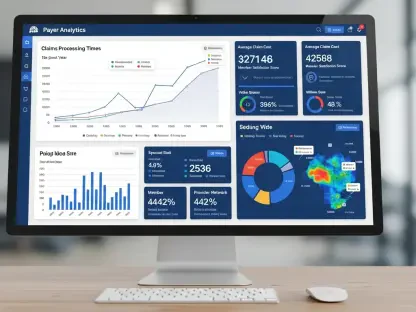A revived initiative in aligning U.S. drug costs with international pricing standards has captured industry attention, potentially leading to significant savings for consumers and reshaping how medications are priced. President Donald Trump’s most-favored nation policy is back in focus, promising a bold approach to recalibrating U.S. pharmaceutical pricing with implications for both consumers and global trade relations.
Evaluating the Policy Framework and its Implications
The core of this analysis examines a strategic shift in the U.S. drug pricing landscape, driven by the pursuit of international parity in prescription costs. This approach seeks to leverage pricing models from other developed nations to establish more equitable rates for American consumers. As prices continue to rise, the initiative aims to control costs that many argue unfairly burden U.S. patients while benefiting foreign counterparts. This proposition challenges overreliance on intermediary profit margins, ultimately aiming to enact broader healthcare reforms.
Trends and Analysis of Drug Pricing Dynamics
The most-favored nation policy remains a point of contention, with stakeholders scrutinizing its potential impact on the pharmaceutical market. Central to Trump’s strategy is eliminating middlemen like pharmacy benefit managers (PBMs), believed to inflate costs through distribution processes. By cutting down on these intermediaries, the proposal promises direct access to medication at standardized prices, leading to increased transparency. The strategy suggests shifting U.S. pricing practices and leveraging international benchmarks.
Globally, aligning U.S. prices with foreign standards could impact existing trade relationships, necessitating new dialogues between nations. Yet, industry skeptics worry about potential disruptions to innovative pharmaceutical endeavors, raising concerns about the balance between cost reduction and maintaining pipelines of research and development. Whether lowering domestic costs will inadvertently raise international ones remains speculative, but discussions around cross-border pricing equality persist.
Projecting Future Market Effects
The pharmaceutical market is set to evolve, influenced by Trump’s pricing agenda. Direct consumer sales and importing medications from countries with lower prices present novel mechanisms to exert competitive pressure domestically. Understanding potential shifts in regulatory environments, alongside advancements in telehealth and personalized medicine, underpins forecasts for market development in this recalibrated landscape. Such factors suggest that the market could benefit from increased diversity and patient choice, challenging established pricing norms.
Reflecting on Strategic Actions and Industry Adaptation
Concluding, the revived policy aimed to change how drugs are priced in the U.S. faced multifaceted challenges and opportunities. By addressing intermediary costs and aligning with international standards, the strategy promised to dismantle complex pricing mechanisms. However, industry adaptation to such transformative policies was crucial, demanding procedural and regulatory readiness. Future considerations urged stakeholders to explore innovative distribution models to support sustainable healthcare access while managing global dynamics. Strategic insights emerged as stakeholders navigated domestic and international impacts, solidifying an understanding of pricing parity’s role in healthcare reform.









